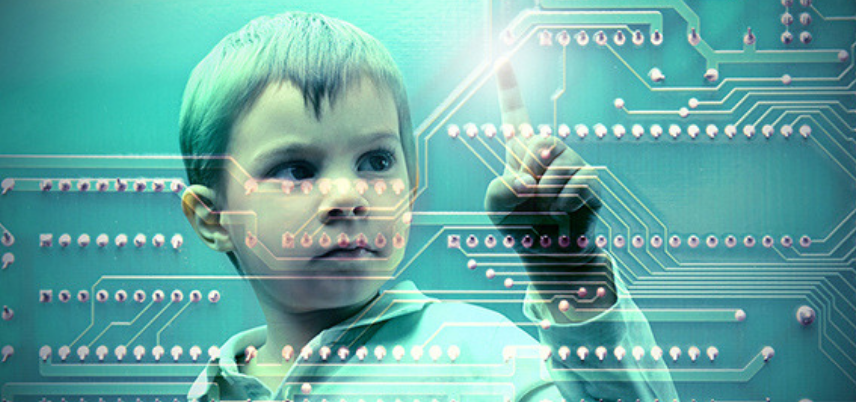Digital Transformation 2.0: The Next Phase for Education

The education sector has seen a lot of technological change in the past few decades, as new systems, platforms and applications have paved the way for new pedagogies and new ways of approaching the learning process. Today, schools are loaded with technologies designed to help educators teach more effectively, which in turn enables students of all learning styles to grasp concepts at a deeper level.
In education, technology has been embraced as a great enabler rather than a roadblock. Digital whiteboards, mobile learning apps, tablet devices and more have become regular tools in the classroom, expanding teaching beyond the traditional stand-and-deliver lecture format and equipping digital-native students with the tools they are most comfortable interacting with.
The digital transformation in education did not happen overnight; resistance to change and reluctance to embrace new ways of teaching were common. And although that thinking still exists, albeit to a lesser degree, the majority of educational institutions today recognize the positive impact technology can have on the learning process.
The first phase of digital transformation in education was a relatively disjointed process, with schools dipping their proverbial toes into cloud and web-based services, adding computers for student use and favoring digital textbooks via tablets over physical books. These initial steps have since become the baseline by which many schools now operate.
Now, the next wave of digital transformation involves the technologies that can take the educational experience even further. The Internet of Things (IoT), automation and adaptive learning are a few of the technologies poised to further evolve the learning process, mirroring digital transformation trends in other industries.
This digital transformation 2.0 builds upon the success educational institutions have had with the first phase of digital transformation and continues to respond to the new opportunities and new challenges in educating an increasingly diverse and digital-centric student population.
DT 2.0 in Education: A Look at the Drivers
Education differs from other industry sectors in that it doesn’t face pressure from competitors. However, schools have a great responsibility in teaching the next generation. Furthermore, education leaders are not only evaluated by teachers, students and parents, but also by a broader taxpayer base, which can impact the amount of funding a district receives. Controls and processes, therefore, must be efficient and, above all, address the core tenet of effective teaching.
Today’s students, who are digital natives, have different learning styles than previous generations, thanks in part to the plethora of technology they are exposed to from birth. In the educational setting, technology can be a useful tool in helping bridge the gap between the student and the subject matter, through alternative ways of presenting information or activities that help promote understanding.
Technology is also leveling the playing—or learning—field for students who have special needs or are non-traditional learners, by enabling them to learn in the style or at a pace that works best for them. By providing the technological tools to help students excel, whether it’s an online learning management system for self-directed learning or a mobile device non-verbal students can use to communicate, schools are positioning all students for success.
Technology has many benefits in the classroom, from promoting a feeling of independence and empowerment to fostering socialization and enabling creativity, not to mention problem-solving and perseverance. And, as technology becomes increasingly critical in the job market, students who understand and embrace technology will be well-equipped to succeed down the road.
Technologies of Digital Transformation 2.0 in Education
The changes brought about by the first phase of digital transformation provide a perfect platform for schools to adopt new technologies that have the power to improve the educational process. Technologies such as the Internet of Things (IoT), automation and adaptive learning are enabling schools to provide a richer educational experience that supports and encourages deeper learning.
Internet of Things
A growing number of institutions are adopting IoT to improve the teaching and learning environment, enhancing classroom engagement and promoting anytime, anywhere learning. Connected devices can automatically adjust classroom lighting based on preset conditions, for example, while student mobile devices can be “pinged” automatically with useful information for various school activities, such as reminders for after-school clubs or homework meetup locations.
IoT can be used by teachers, administrators and students alike, for various needs. Administrators can use IoT to increase and enhance the security of a school, enabling automatic lockdown in case of an emergency such as a tornado warning or criminal activity in the vicinity of the school. Additionally, schools could use IoT-enabled facial recognition to identify people on campus and locate those who are not authorized.
In the learning environment, IoT can be used by instructors to share information with students via digital devices. For example, a teacher writing on a digital whiteboard could send the information to a device of a student’s choosing – as an email, a text to the student’s smartphone or as a note to a tablet. Teachers can also use data culled from personal learning devices connected to the cloud to determine which students need additional instruction, thereby enabling a more personalized learning environment. Likewise, the instructor could view and analyze the progress of the class as a whole to determine whether students are learning at an appropriate pace and make any curriculum adjustments as needed.
Automation
In education—as in other industries—time is a valuable commodity. Teachers are tasked with many things during the school day that can detract from the instructional experience, such as taking attendance, grading papers and filling out paperwork to reserve equipment or schedule field trips. Automation—especially when paired with artificial intelligence—can help teachers spend less time on administrative work and devote more time to instruction.
For example, rather than a teacher having to spend 10 minutes at the start of the day taking attendance, students can “check in” automatically through a sensor or RFID tag on their student ID. Likewise for hall passes—instead of the teacher filling out a pass for each student who needs to leave the classroom, the sensor can automatically track the students’ movements throughout the building. This technology has the added benefit of knowing where students are at all times, anywhere on campus.
In the administrative offices, automation can help enhance communication between administrators, teachers and parents. For example, a student whose sensor detects him leaving the building each day when he should be in gym class would be flagged by the system, which would then alert the administrator and the parents. And, should the student deny any wrongdoing, the system would have a record of each time the student left campus as proof.
Automation also can help increase the use of educational technology within the classroom, by streamlining controls and simplifying the process associated with using them. It’s well-known that people won’t use technology they find difficult to operate, whether it’s a projector or an online digital learning site. Schools can use automation through hardware integrations and create one application that controls all of the devices.
Adaptive Learning
The concept of adaptive learning is not new—schools have been offering “personalized learning” that is adapted to students’ learning styles and pace for some time. But with the advent of artificial intelligence and automation, adaptive learning as a technology is becoming a reality.
According to Wikipedia, adaptive learning is “an educational method which uses computer algorithms to orchestrate the interaction with the learner and deliver customized resources and learning activities to address the unique needs of each learner.” It is transformational in enabling a truly personalized learning experience for the student, as it constantly measures progress and adjusts the curriculum accordingly.
Adaptive learning systems have become more prevalent, thanks in part to the advancement of digital technologies in classrooms. Today, adaptive learning is being used to put a new spin on teaching, such as gamification (earning badges or levels by passing tests or completing assignments online within a particular timeframe, for example), or to establish baselines for learning by assessing a student’s knowledge of a topic. The teacher then can use the adaptive learning technology to present information to each student at their level.
Future iterations of adaptive learning will learn alongside the students to enable even more personalization, presenting information in a manner that can change in real-time depending on external influences such as noise level, time of day and even the mood of the student.
Building the Infrastructure for Digital Transformation 2.0
Digital transformation 2.0 in education requires an infrastructure that is capable of supporting multiple technologies both on-premises and in the cloud and can manage the massive data storage and back-and-forth transport that many transformative technologies require.
As educational institutions strive to move to the next level, they need an environment that supports digital transformation from every point on the network. Hybrid cloud and network environments, SD-WAN and high-speed broadband are just some of the technologies that can enable districts to better manage their sensitive data and systems across multiple locations, while networking components such as WiFi and unified communications can ensure teachers and students have the resources they need to be productive and ready to learn.
No digital transformation happens overnight, regardless of how committed the school is. To help educators as they move deeper into digital transformation without overly stressing their current network and to help streamline processes for IT managers, managed services can help tie disparate systems together and “fill in the gaps” as educational institutions update their current infrastructure and even after networks have been upgraded.
Working with a network service provider, IT leaders can build a modern network and IT infrastructure that’s capable of handling all the aspects of digital transformation 2.0 in education. School districts can leverage virtual and physical private Ethernet connectivity to assure there are no issues regarding network performance and availability for critical applications at all school locations. They can also receive all or some of their most critical connectivity functions as a managed service, including managed connectivity, WiFi, security, voice and business continuity.
Conclusion
The second phase of digital transformation builds upon the success schools have enjoyed with their first phase of digital transformation through new technologies designed to extend and enrich the educational experience.
As society becomes ever more digital-centric, it is imperative schools operate with a digital-first mindset to position students for success today and in the future.
The next phase of digital transformation in education promotes greater personalized learning and builds new school efficiencies.
Locked Content
Click on the button below to get access
Unlock NowOr sign in to access all content on Comcast Business Community
Tags
Resource Center
Learn how Comcast Business can help
keep you ready for what's next.










